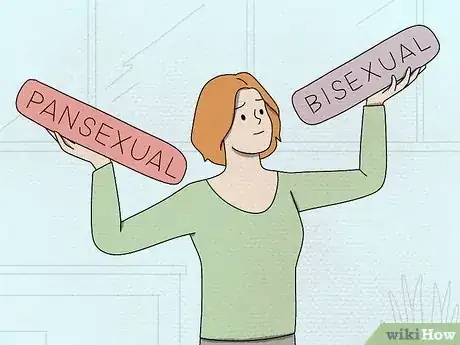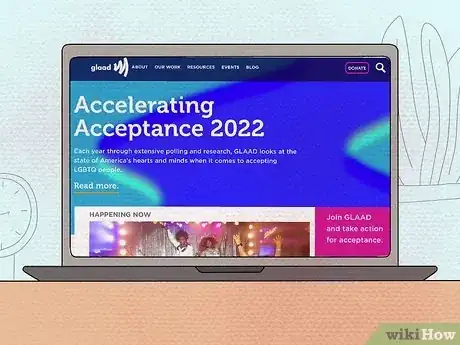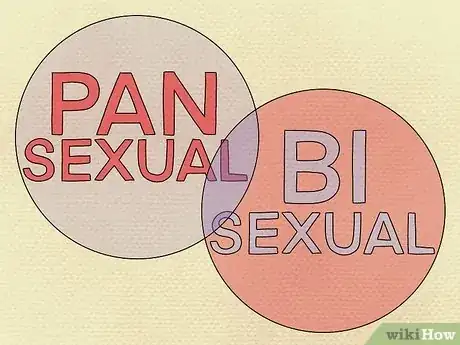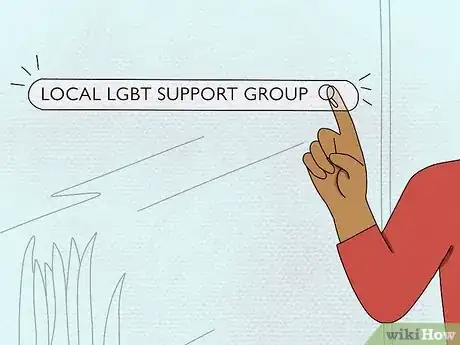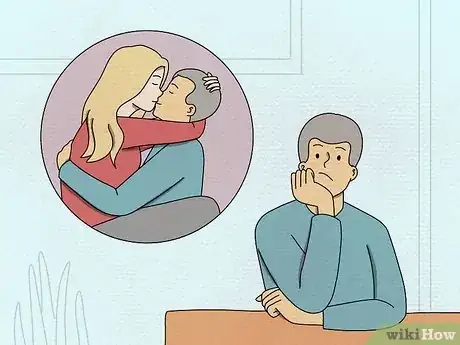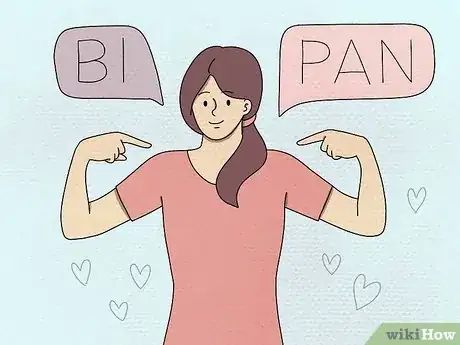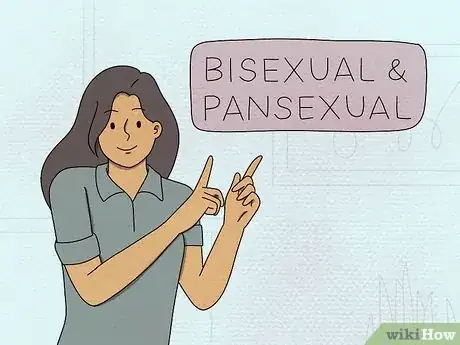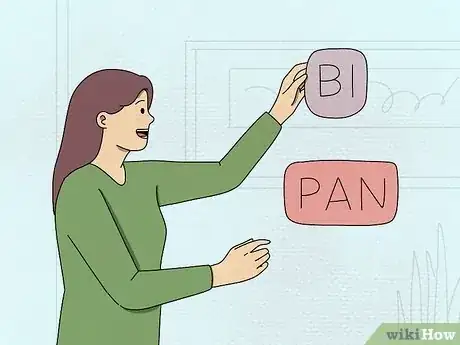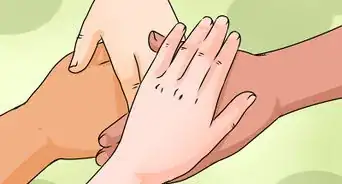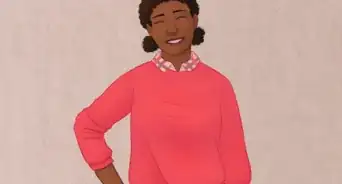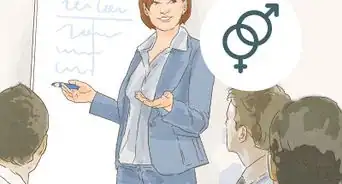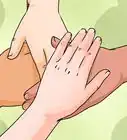This article was co-authored by Jin S. Kim, MA. Jin Kim is a Licensed Marriage and Family Therapist based out of Los Angeles, California. Jin specializes in working with LGBTQ individuals, people of color, and those that may have challenges related to reconciling multiple and intersectional identities. Jin received his Masters in Clinical Psychology from Antioch University Los Angeles, with a specialization in LGBT-Affirming Psychology, in 2015.
This article has been viewed 90,670 times.
Finding a term to define your sexuality can be empowering. However, if you fall between the traditional labels of gay or straight, it can also be confusing. There are many different ways to describe people who are attracted to multiple genders, and two common terms are bisexual and pansexual. While there is considerable overlap between terms, each are distinct in their own way. With a little research and personal exploration, you can define your sexuality using terms that work for you.
Steps
Learning about the Terms
-
1Learn the basic differences between pansexual and bisexual. The basic difference between "bisexual" and "pansexual" is the prefixes. Many people incorrectly believe that the prefix "bi" implies attraction based on a gender binary. The prefix "bi" does not mean and has never meant attraction to the gender binary. The medical community originally assigned the terms "homosexual" (same-sex attracted), bisexual (attracted to both sexes), and heterosexual (opposite-sex attracted).[1] If you are attracted to two sexes, you can be attracted to any gender. Today, many bisexuals use the definition of "attraction to more than one gender" which can include all genders or lack of genders. The prefix "pan" implies an attraction to all genders. The differences do not mean bisexual people are only attracted to men and women or that pansexual people are "gender blind."[2]
-
2Do some outside reading on both terms. As the terms bisexual and pansexual have such a diverse range of meanings, it can help to do your own research. Explore websites about both bisexuality and pansexuality, as well as general LGBT websites that discuss the differences in terms more broadly. This can help you learn as much about the history and culture surrounding the words so you can pick a term that most closely matches your own sexual orientation.[3]
- You can check websites for organizations like GLAAD and the LGBT foundation to find more information.
Advertisement -
3Recognize there is overlap between terms. While some think that bisexual means attraction to two genders and pansexual means attraction to all genders, this is not the case. Both terms mean different things to different people and there is a lot of overlap between bisexuality and pansexuality.[4]
- Bisexual people are not exclusively attracted to men and women. To some, being bisexual can certainly mean exclusive attraction to men and women. To others, however, the term means being attracted to one's own gender as well as other genders. It can also mean attraction to more than one gender or two or more genders or attraction to the two sexes. "Bisexual" does not have to be a limiting term, nor is it necessarily transphobic or binary.
- Pansexual people are not always "gender blind." Some pansexual people don't consider gender a major factor in sexual attraction. Others may consider gender as a factor in sexual attraction but identify as pan to indicate an attraction to many different genders.
-
4Seek out outside support and guidance. Look for local LGBT support groups in your area or online. Discussing your sexuality with others can help you find insight about the definitions that would suit you best. It can even help to find a group exclusively for people who identify as neither gay or straight, as there is bound to be a lot of discussion about the various terms for sexual attraction.[5]
Reflecting on Your Sexuality
-
1Consider your feelings regarding gender. While it's important to remember there is overlap in terms, it can help to think about your personal feelings regarding gender. Pansexuality often means gender assignment or expression is not a major factor in sexual attraction. Some assume that bisexuality may mean you're more heavily affected by gender when you experience attraction because they incorrectly assume that bisexuality is always binary, but this is untrue.[6]
- If you're bisexual, for example, you may have different levels or types of attraction between genders. You may be physically attracted to men, but only want to have romantic relationships with women. Pansexuals can also have preferences since pansexual doesn't always mean "gender-blind."
- Pansexual can sometimes be a political label. Some people prefer the term because it does not acknowledge a gender binary. However, bisexuality does not necessarily imply a binary, either.
-
2Think about the people you're attracted to. Spend some time reflecting on the feelings of attraction and romantic interest you experience on an average day. Ask yourself what type of people you're drawn towards and the reason these people are attractive to you. This can help you determine which term more accurately explains your orientation.[7]
- For example, you may be drawn to the same basic qualities between men and women. You may be drawn to tall people with dark hair and a good sense of humor, for example, regardless of gender. This could imply gender is not a big factor for you in terms of romantic and sexual interest, which may mean pansexual would be the better term for you. However, gender may not be a big factor for bisexuals, either.
-
3Reflect on your romantic history. Sexual and romantic history does not necessarily reflect sexual orientation. Don't assume you have to identify a particular way because of your dating patterns. However, thinking about how you've responded to people romantically in the past can shine some light on your sexual orientation.
-
4Recognize you can identify as bi and pan. Many people identify as both bi and pansexual. As the terms are so similar, it's sometimes hard to find a clear distinction. If you're truly unsure which term is right for you, you can tell people you are both bi and pansexual or use the terms somewhat interchangeably.[8]
Making Your Own Decision
-
1Accept sexual behavior does not dictate orientation. People sometimes assume if someone has only dated people of one gender they must be gay or straight. While considering your romantic history can help you explore your sexuality, it is not a determining factor. Just because you haven't acted on certain feelings of attraction does not mean you don't experience them.[9]
- For example, say you've only ever dated people of the opposite gender. However, you frequently experience romantic and physical attraction to people of your own gender. You can still identify as bisexual.
-
2Define labels on your own terms. You define labels and not the other way around. Due to the fact the labels bisexual and pansexual mean different things for different people, you can choose a label and define it from there. Think of a label as a broad starting point to give people a rough idea of your sexuality. As they get to know you better, they can get a more complex understanding of your orientation.[10]
- For example, you can identify as bisexual or pansexual even if you have a strong preference for a certain gender or type of gender expression.
-
3Give yourself time. There is no reason to rush into defining your orientation. You don't need to push yourself to come out or to identify in a particular way before you feel ready. Some people feel comfortable with a term within a few weeks, while others may take years to decide. Everyone goes at their own pace and there's nothing wrong with this.[11]
-
4Choose a term you're comfortable with. At the end of the day, choose the term that feels comfortable for you. While it's okay to seek guidance from others, and explore the history behind the terms, what matters most is your opinion. Pick the term that feels right for you and that you can see yourself adopting as a personal identity.[12]
References
- ↑ https://en.wikipedia.org/wiki/Bisexuality
- ↑ https://minus18.org.au/index.php/resources/sexuality-info/item/647-bisexual-vs-pansexual
- ↑ http://www.binetusa.org/Pages/FAQPages/IThinkIMightBe.html
- ↑ http://www.teenvogue.com/story/what-is-pansexuality
- ↑ http://www.binetusa.org/Pages/FAQPages/IThinkIMightBe.html
- ↑ http://www.teenvogue.com/story/what-is-pansexuality
- ↑ http://www.teenvogue.com/story/what-is-pansexuality
- ↑ https://minus18.org.au/index.php/resources/sexuality-info/item/647-bisexual-vs-pansexual
- ↑ http://www.independent.co.uk/voices/comment/im-pansexual-here-are-the-five-biggest-misconceptions-about-my-sexuality-10480878.html
About This Article
While there is some overlap between bisexuality and pansexuality, it can be empowering to find the term that best suits your identity. Bisexuality means an attraction to more than one gender while pansexuality means an attraction to all genders. Take some time to think about the people that you’re attracted to. Think about the qualities that these people have in common and if gender doesn’t seem to be an important factor for you, then you might best identify as pansexual. Reflect on your romantic history to try and get a sense of whether you’re bisexual or pansexual. Try to focus on how you’ve responded to each ex-partner in a romantic sense to give yourself some clarity about your sexuality. Most importantly, choose the term that you are the most comfortable with. Talk to people that are supportive of you and form an opinion about which term best represents your identity. For more information on how to decide whether you’re bisexual or pansexual, like how to define each label on your own terms, read on!
